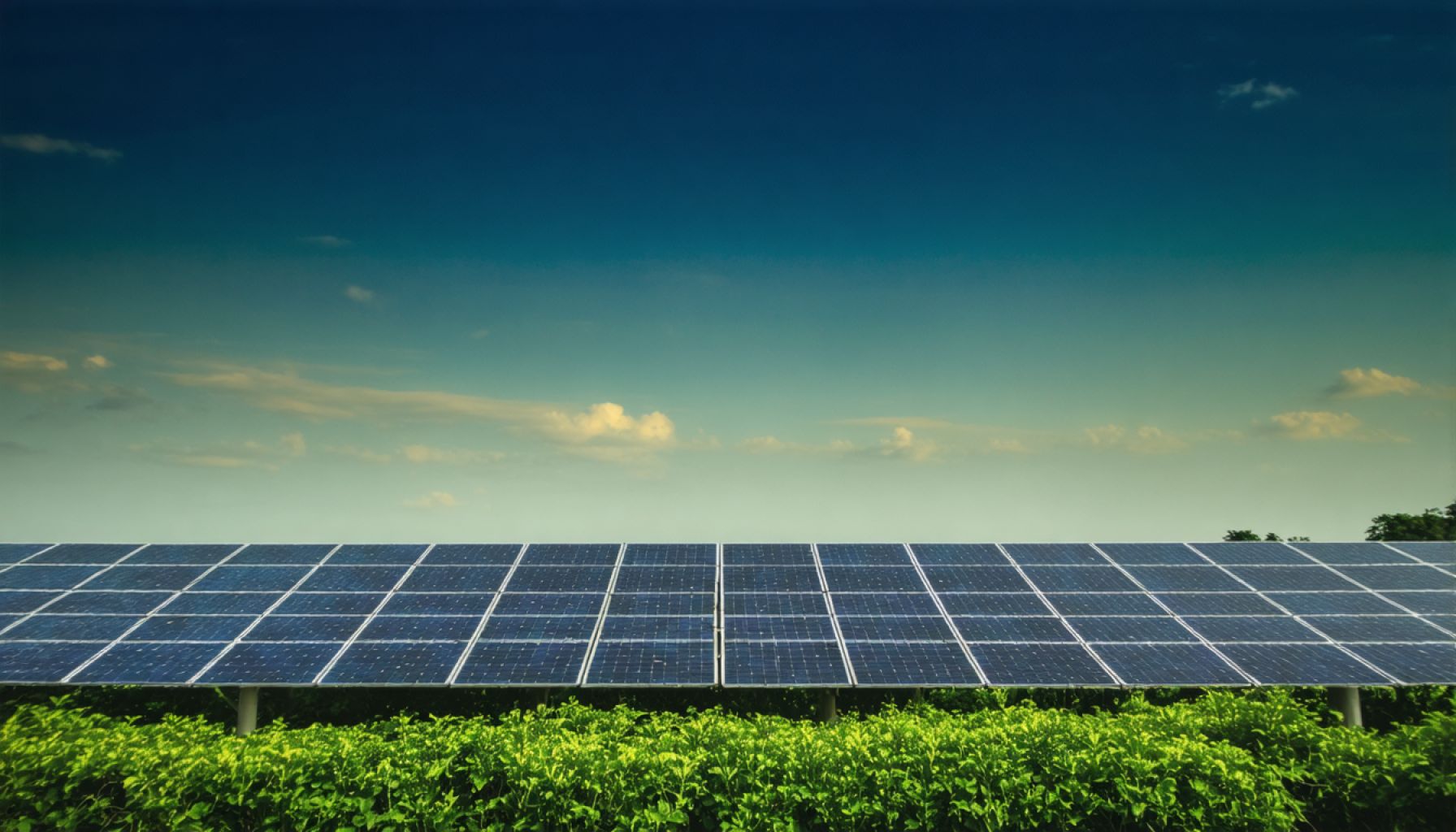- Bangladesh’s renewable energy aspirations remain unfulfilled; renewables account for only 3% of the national grid, well below the 2008 policy’s 10% target for 2020.
- The upcoming policy revision aims for at least 20-25% renewable energy by 2030 and full decarbonization by 2050.
- Coordination issues among governing bodies hinder progress, suggesting the need for a Renewable Energy Council.
- Diversifying energy sources, including wind power and emerging technologies, is crucial for transforming Bangladesh’s energy landscape.
- Private sector engagement is critical; removing bureaucratic barriers and offering incentives can attract investments.
- Innovative solutions like floating solar farms and agrovoltaic systems can overcome land scarcity issues.
- Establishing a Green Energy Fund and promoting local manufacturing can bolster financial and industrial growth.
- Bangladesh can learn from regional leaders like India and Vietnam to implement ambitious renewable energy strategies.
Bangladesh stands at a crossroads, grappling with an energy framework that seems stuck in the past. When it adopted the Renewable Energy Policy in 2008, Bangladesh envisioned a future where renewable sources would constitute a significant share of its electricity generation. Yet, this vision remains largely unfulfilled; fast forward to 2023 and renewables make up a mere 3% of the national grid—a far cry from the policy’s ambitious 10% target for 2020.
As Bangladesh edges closer to a critical policy revision, the stakes could not be higher. The nation faces mounting pressure to tackle energy security, burgeoning carbon emissions, and international climate commitments. The revised policy, therefore, must chart a radical shift towards more realistic yet bold targets, aiming for at least 20-25% of renewable energy by 2030, and fully decarbonizing the energy sector by 2050.
Coordination among governing bodies remains a stubborn hurdle, often leading to fragmented and delayed implementation. A proposed Renewable Energy Council could harmonize efforts, ensuring that authorities work collaboratively rather than in silos. Furthermore, empowering the Sustainable and Renewable Energy Development Authority (SREDA) with greater regulatory clout could ignite a faster rollout of green initiatives.
Diversification holds the key to transforming Bangladesh’s renewable landscape. While past policies have focused mainly on solar and biomass, a broader spectrum beckons. Wind power, both onshore and offshore, holds vast untapped potential in coastal regions like Cox’s Bazar. The country must also invest in new horizons such as ocean energy, hydrogen fuels, and waste-to-energy approaches.
Private sector involvement lags significantly, hindered by bureaucratic roadblocks and policy opacity. By untying red tape and offering lucrative incentives like tax breaks and subsidies, Bangladesh could draw needed investment into renewable projects. A partnership between public and private sectors could serve as a catalyst for innovation and expansion in the energy arena.
Despite the introduction of the Net Metering Guideline in 2018, its slow uptake signals a need for stronger policy impetus. Expanding net metering and providing financial incentives for rooftop solar installations can accelerate solar energy’s adoption, thereby enhancing energy access, particularly in remote rural areas.
Land scarcity poses a formidable challenge to solar energy expansion. However, floating solar farms present an ingenious solution. The exploitation of reservoirs and water bodies could unlock new avenues for solar installations, while agrovoltaic systems could harmonize solar power generation with agricultural activities, making efficient use of available land.
Financially, the creation of a Green Energy Fund could alleviate capital constraints, offering low-interest loans and fostering investor confidence. Additionally, crafting special renewable energy bonds and carbon trading mechanisms could attract both local and international interest toward clean energy investments.
Bangladesh has made commitments under the Paris Agreement, but true alignment with global climate goals demands more aggressive strategies, including carbon pricing and systematic phasing out of coal and imported LNG. A focus on local manufacturing of renewable technologies, such as solar panels and wind turbines, could reignite Bangladesh’s energy sector, spurring economic growth and enhancing energy security in the process.
The country has valuable lessons to glean from regional trailblazers like India and Vietnam. They offer roadmaps richly paved with ambitious targets, decentralized energy systems, and incentivized domestic production. Emulating their models could create a fertile ground for Bangladesh to flourish in renewable energy.
Fifteen years have gone by, and the clock is ticking. Bangladesh’s energy policy needs a jolt towards modernity, one that not only decelerates its reliance on fossil fuels but positions it as a vanguard in sustainable energy. The journey demands swift decisions and decisive action. Failing to seize this moment could deepen Bangladesh’s energy crisis, stalling the nation’s transition to a cleaner, greener future.
Why Bangladesh’s Energy Sector Needs a Revolutionary Overhaul Now
Introduction
Bangladesh finds itself at a pivotal juncture in its energy policy evolution. Despite the Renewable Energy Policy instituted in 2008 to encourage a shift to renewable sources, such sources only account for a meager 3% of the national grid today. With an original target of 10% by 2020, the country’s energy transition has significantly lagged, calling for an urgent and comprehensive strategy revision.
Pressing Questions About Bangladesh’s Renewable Energy Journey
Why is Bangladesh Delayed in Renewable Energy Adoption?
Several factors have impeded progress, including bureaucratic hurdles, lack of coordination among governing bodies, insufficient regulatory power of agencies like the Sustainable and Renewable Energy Development Authority (SREDA), and an incomplete focus on diversifying renewable sources.
What Are the Potential Renewable Energy Sources in Bangladesh?
Though past efforts have centered on solar and biomass, immense potential lies in wind power, particularly in coastal areas such as Cox’s Bazar. In addition, ocean energy, hydrogen fuels, and waste-to-energy systems offer new opportunities for diversification and expansion.
How Can Bangladesh Overcome Financial and Infrastructural Barriers?
The setup of a Green Energy Fund offering low-interest loans, renewable energy bonds, and carbon trading mechanisms would ease capital constraints and galvanize investment. Appropriate incentives, including tax breaks and subsidies, can further stimulate private sector involvement.
What Can Bangladesh Learn From Regional Peers?
Countries like India and Vietnam have successfully implemented ambitious targets and decentralized energy systems, proving that strong policy frameworks and domestic production incentives can significantly boost renewable energy sectors.
Industry Trends and Predictions
Bangladesh’s aim to reach 20-25% renewable energy by 2030 and full decarbonization by 2050 requires seizing emerging trends in renewable technology. Predictions suggest a rising focus on local manufacturing—such as producing solar panels and wind turbines locally—which will fuel economic growth and enhance energy security.
Real-World Use Cases and Innovations
Floating Solar Farms: To address land scarcity, floating solar farms utilize reservoirs and bodies of water, offering a practical solution for solar energy expansion. This can be combined with agrovoltaic systems, allowing land to be used simultaneously for agriculture and solar power generation.
Public-Private Partnerships: Bridging gaps between existing policy and innovation necessitates robust public-private partnerships. These collaborations will foster cutting-edge solutions and facilitate large-scale projects catalyzing the renewable sector.
Pros and Cons Overview
Pros:
– Economic Growth: By tapping into renewable resources like wind and solar, Bangladesh can stimulate job creation and local manufacturing, mitigating unemployment and boosting economic progress.
– Environmental Benefits: Transitioning from fossil fuels significantly reduces carbon emissions and pollutants harmful to health and the environment.
Cons:
– Initial Costs: Transitioning to renewables involves substantial upfront investment and infrastructure modifications, which may strain financial resources.
– Technological and Skills Gap: Deployment of advanced technologies requires specialized skills, highlighting the importance of upskilling the workforce.
Actionable Recommendations
1. Establish a Renewable Energy Council: To ensure coordinated efforts, creating a central body to streamline renewable energy initiatives is crucial.
2. Expand Financial Mechanisms: Developing low-interest green loans and bonds, along with carbon pricing strategies, can attract investment.
3. Leverage Global Partnerships: Collaborate with countries leading in renewable energy to gain insights and technology transfers.
4. Enhance Grid Infrastructure: Modernize and decentralize the national grid to accommodate increased renewable energy inputs.
For more information about global renewable energy trends, visit the International Renewable Energy Agency (IRENA).
Conclusion
Bangladesh’s energy future hinges on its ability to modernize its policies and accelerate the adoption of renewable energy. By leveraging available resources, regional examples, and public-private collaboration, Bangladesh can reposition itself as a leader in sustainable energy, ensuring a bright and sustainable future for generations to come.









